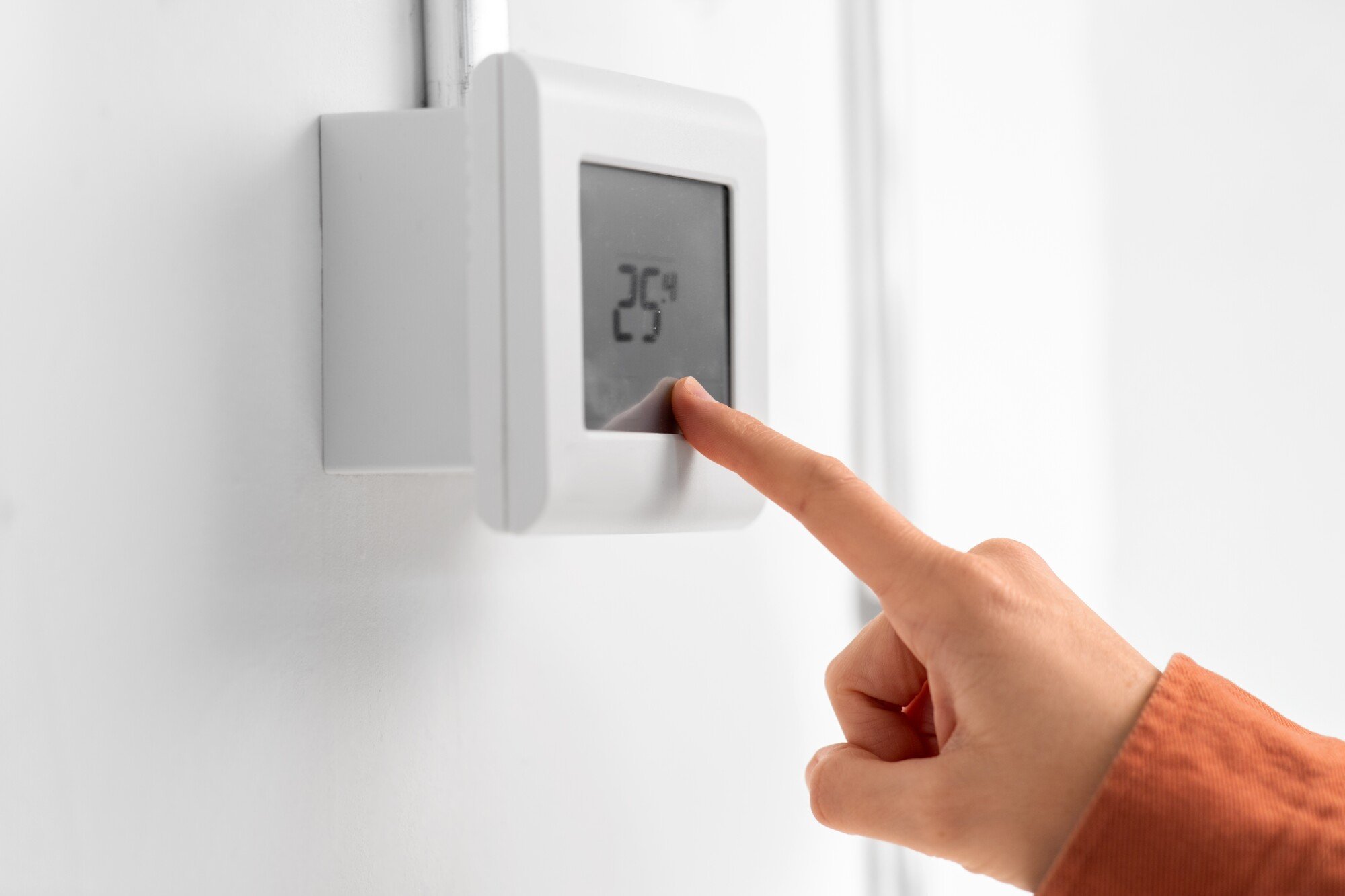When the temperature outside hits 90 degrees, it’s natural to want your home to be a comfortable escape from the heat. But finding the ideal comfort setting for your thermostat can be tricky. You want to stay cool without sending your energy bills through the roof.
This can be especially challenging in Madisonville, KY, where summer heat is often intense. The key is striking a balance between personal comfort and energy efficiency.
In this handy blog post, the local experts at Fulcrum Mechanical will explore what the optimal indoor temperature might be for your home on a scorching day and offer practical tips to keep you feeling comfortable without overloading your air conditioning system.
Comfort Levels in the Home
It’s important to say that comfort in your home is more than just hitting a specific number on the thermostat. It’s about achieving a balance where you don’t feel too hot or too cold, and the air quality is just right. Indoor comfort is influenced by temperature, humidity, and air movement.
Humidity plays a significant role in how we perceive temperature. When humidity is high, the air feels thicker and warmer because it holds more moisture. This can make a 75-degree room feel much warmer, leading to discomfort. On the other hand, low humidity can make the air feel cooler, but it can also dry out your skin and respiratory system.
Individual preferences also affect comfort levels. Some people naturally run warmer and prefer cooler temperatures, while others may need a bit more warmth to feel at ease. Age, health, and activity levels can also influence these preferences.
To keep everyone in your household happy, it’s important to consider these variables when setting your thermostat or managing your home’s indoor climate.
Recommended Indoor Temperatures
Now, when it comes to setting the ideal indoor temperature during hot weather, many factors come into play. For a starting point, the U.S. Department of Energy suggests 78 degrees Fahrenheit for optimal energy efficiency in summer. This temperature strikes a balance between keeping you cool and preventing your air conditioner from working too hard.
However, 78 degrees might not always feel comfortable, especially when humidity is high or when the sun is blazing through your windows.
This is where ceiling fans and good airflow can make a big difference. Ceiling fans don’t actually lower the room temperature, but they create a breeze that makes you feel cooler by evaporating sweat from your skin. This means you can keep the thermostat at 78 degrees or even a bit higher, while still feeling comfortable.
Personal adjustments are also important. Depending on how your home is laid out, certain rooms might need different temperature settings.
Rooms with more sun exposure might feel warmer, requiring additional cooling, while shaded rooms might stay cooler with less air conditioning. If you spend a lot of time in one area, like a home office or living room, you might prefer a slightly cooler setting for comfort.
Factors Affecting Indoor Temperature
Indoor temperatures are influenced by several factors that you might not even realize are affecting your comfort. Sun exposure plays a big role, as rooms that get direct sunlight during the day, especially those facing east or west, tend to be warmer, which can make them feel uncomfortable.
This extra heat can put a strain on your air conditioning system and make it harder to maintain a consistent temperature throughout your home.
Insulation is another key factor. If your home isn’t well-insulated, it can’t effectively keep out the summer heat. Window treatments also matter. Without proper curtains, blinds, or shades, the sun’s rays can easily heat up a room.
Moreover, the number of people in a room can affect its temperature. Basically, the more people there are, the more body heat is generated.
To manage these factors, you can use blackout curtains in rooms with a lot of sun exposure, improve insulation by adding weatherstripping around doors and windows, and use ceiling or box fans to keep the air moving.
Finding Your Ideal Indoor Temperature
Finding your ideal indoor temperature is often a balancing act between comfort and energy efficiency. A good starting point is to set your thermostat at 78 degrees Fahrenheit, as mentioned above, and then adjust based on your personal comfort and the unique characteristics of your home.
Different rooms can feel warmer or cooler depending on their location and sun exposure, so it’s important to experiment with various settings to find what works best for you.
Monitor your comfort level throughout the day, especially during times when the sun is most intense. If you find some rooms are too warm, consider using ceiling or box fans to improve air circulation, which can help you feel cooler without having to lower the thermostat.
Energy costs are a key consideration when setting your indoor temperature. Remember that for every degree you lower the thermostat, energy usage increases, which can impact your monthly electric bill.
To stay cool without cranking up the air conditioning, try using light bedding and clothing, drinking cold beverages, and keeping doors and windows closed during peak heat times.
Smart Home Solutions for Hot Days
Finally, it’s worth highlighting how smart home technology is revolutionizing how we manage comfort and efficiency. Smart thermostats can be programmed to adjust temperatures based on your schedule, saving energy when you’re not home.
Remote control options let you change settings from anywhere, offering flexibility. Some advanced systems can even sync with weather forecasts, automatically optimizing indoor temperatures.
The benefits are clear: smart technology can reduce energy costs, personalize comfort settings, and simplify maintaining a comfortable home environment.
Staying Cool When the Outside Temperature is High
To sum up, achieving the ideal comfort setting when cooling a house requires a mix of smart technology, proper insulation, and individual preferences. By exploring recommended indoor temperatures, using simple solutions to control heat, and leveraging smart home devices, you can stay comfortable even on the hottest days in Madisonville, KY.
For reliable assistance with your HVAC needs, Fulcrum Mechanical is your best choice. We offer 24/7 services to ensure your home’s comfort setting is always just right. Contact us today to learn how we can help you keep your house cool and efficient, no matter the temperature outside.







